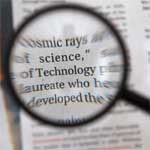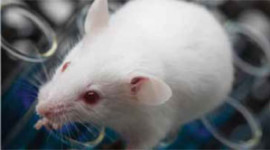 “How Natural Variations Became Environmental Crises: The Word Game,” by Frank Schnell.
“How Natural Variations Became Environmental Crises: The Word Game,” by Frank Schnell.
In How Natural Variations Became Environmental Crises: The Numbers Racket, we looked at how officially “safe” levels of exposure gradually went from conservative, to ultra-conservative, to completely ridiculous. Even before the manipulation of numbers became commonplace, the manipulation of words was a major tool in promoting fear about science and keeping it alive. Simple words in common usage, like “risk”, “known”, “similar” and “equivalent” were given esoteric, colloquial meanings that bore little resemblance to their definitions in Webster’s Dictionary and of which the general public was completely unaware. Thus, unbeknownst to the average citizen, EPA’s so-called quantitative cancer risk assessments have never assessed the true risk of potentially carcinogenic exposures. In EPA’s 1986 Risk Assessment Guidelines, the following, uncharacteristically honest, and seldom quoted (except by me) statement was made: “The true risk is unknown and may be as low as zero.” Obviously, if the “true” risk is unknown, then the “risk” that is supposedly quantified in EPA risk assessments is not the “true” risk. Read more.
Safer Living with Chemicals
Topics
Coalition Members
- 60 Plus Association
- American Council on Science and Health
- Americans For Tax Reform
- Competitive Enterprise Institute
- Frontiers of Freedom
- Independent Women’s Forum
- National Center for Policy Analysis
- National Center for Public Policy Research
- Pelican Institute for Public Policy
- Rio Grande Foundation
- The Heartland Institute
- Washington Policy Center
Research

“Beepocalypse” Not: Alarmist Honeybee Claims Collapse Under Scrutiny, By Angela Logomasini, Ph.D. If you believe the headlines, honeybees may soon be endangered, pesticides are to blame, and regulations offer an easy solution. Yet headlines belie … [Read More...]
Learn the Science
Epidemiology
Clinical Studies
Cohort Studies
Case-Control Studies
Ecological Studies
Relative Risk
Statistical Significance
Random Samples
Data Mining
Sample Size
Meta-Analysis
Confounding Factors
Recall Bias
Researcher Bias
Rodent Studies
Exposure: The Dose Makes the Poison
Peer Review
Reproducibility
Weight of the Evidence
Competitive Enterprise Institute
1310 L Street, NW, #700
Washington, D.C. 20005
Copyright © 2025 · Enterprise Child Theme on Genesis Framework · WordPress · Log in

